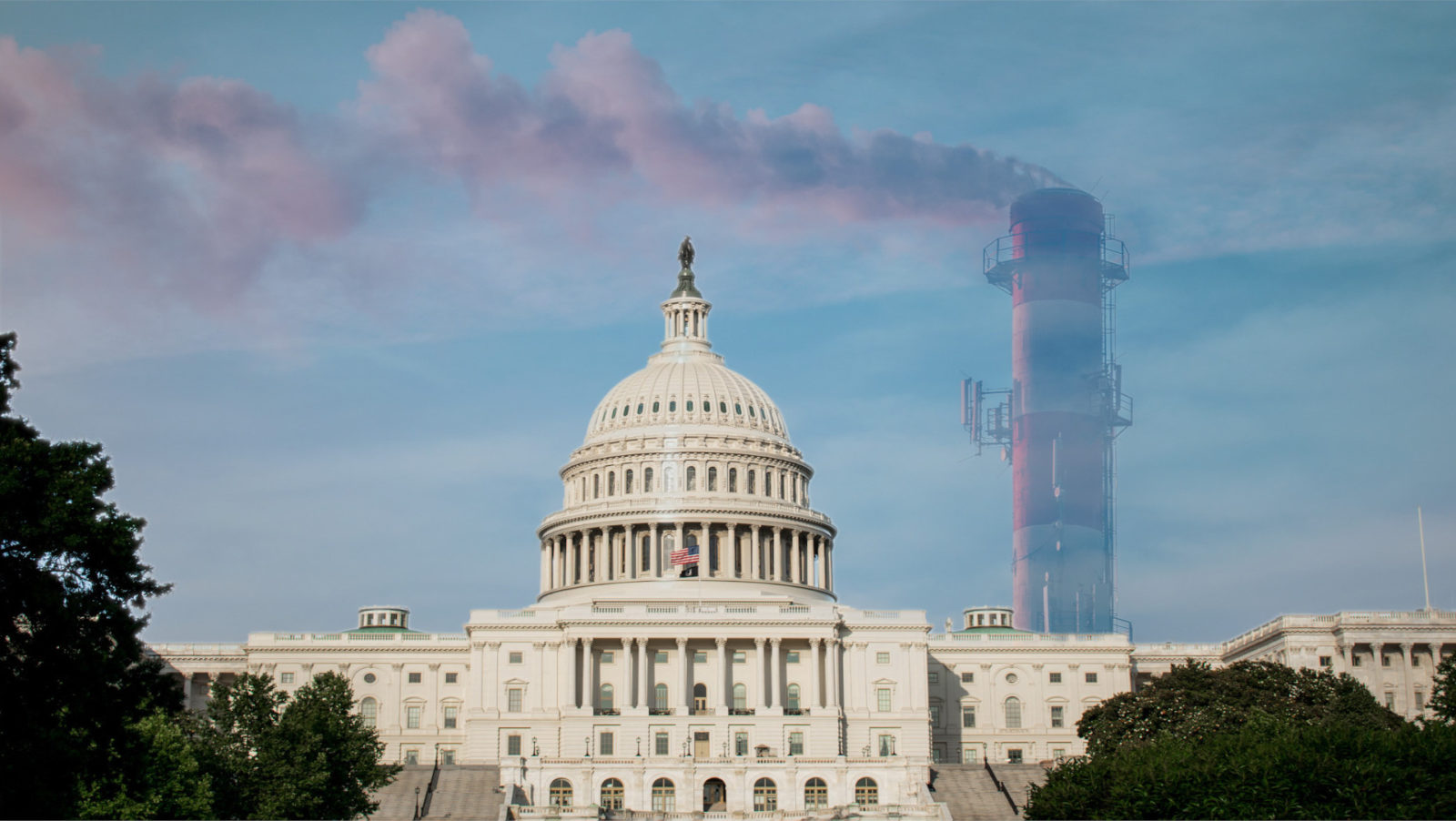By: Matt Lundy
In a first for the party, Republican legislators have finally introduced their own emissions target for CO2, and it is nowhere near enough.
At the end of last year, three Republican senators announced the American Energy, Jobs & Climate Plan, which outlined their approach to American energy and global climate change. While many of the plan’s elements are familiar touchstones of conservative climate conversations, such as emphasizing methane gas and carbon capture technologies, the explicit emissions target is a novel addition. Just like the rest of the plan, their target stands in contrast to the objectives endorsed by President Biden and other Democrats. Whereas Biden’s plan aims to reduce U.S. emissions by 50 – 52 percent by 2030 and 100 percent by 2050, the new Republican target supports a plan “to reduce global CO2 emissions by 40 percent by 2050.”
The lower Republican target stands in opposition not only to Democratic prescriptions, but also to recommendations from scientific bodies such as the Intergovernmental Panel on Climate Change, which advocates for a 100% reduction by 2050. With this counter stance, Republicans not only show they stand at odds with Democrats — an unfortunately important aspect for our ever more partisan institutions — but they also reveal a lack of individuality in coming up with their own policy.
A 40 percent reduction target for 2050 only pays lip service to the climate conversation, and ignores the reasons why such targets are made. The Republican’s target is not intended to prevent some specific amount of warming that they have deemed a worthy limit (no upper warming limit is ever mentioned), whereas this is precisely where a 100 percent reduction target comes from: the need to limit warming to 1.5 degrees Celsius (1.5°C). Without justification for the specific emissions target, the target becomes pointless. How is 40 percent more appropriate than 30 percent, 50 percent, or even 100 percent when there is no articulable benefit that reaching 40 percent achieves? The announced target brings Republicans into the emissions conversation only to then clarify that such an introduction is simply a means to an end: ceaseless opposition of Democrats.
Instead of this contrarianism, Republicans could take the opportunity presented by climate change to craft meaningful policy, which would serve as a true counterbalance and alternative to Democratic options. After all, there is ample space to discuss points of policy that are currently sidelined in the climate discussion. Methane gas has been a key factor in recent drops in U.S. emissions, though it still fails to be a long-term climate solution. States that limit their own oil production, such as California, have increased foreign oil imports to cover demand instead of increasing renewable capacity, though these imports may still produce less emissions than domestic oil. Nuclear power is a clean, safe energy source that can play a pivotal role in eliminating emissions, though it is all too often ignored as a climate solution. Republicans touch on these points to criticize Democratic climate plans, but that is generally as far as they go.
There is space to fill in the American discussion on climate change beyond simple antagonism towards Democratic policies. Republicans can take up this space if they want to be a meaningful part of the discussion and extoll conservative values at the same time. It would also be in their own party’s interest to do this given that the next generation of Republicans show greater concern about the climate. But if Republicans want to take this route and offer a real alternative to the American people, they must come to terms with the “unprecedented” reality of climate change and create policy that reflects it. If the half a degree between 1.5°C and 2°C means the difference between losing virtually all of our coral reefs, a potential collapse of our ice sheets, a doubling of the number of people suffering water stress, or the surpassing of irreversible tipping points, then there is little space for Republicans to introduce climate plans that do not aim for a 100 percent reduction in emissions by 2050 because that is what’s necessary to prevent 2°C of warming.
Any formulation of such a pathway will have to include emphasis on renewable energy, such as wind and solar. The landmark International Energy Agency report on getting to net-zero by 2050 lays out that if all announced net zero pledges are achieved, “almost 90 percent of global electricity generation in 2050 comes from renewable sources, with solar PV and wind together accounting for nearly 70 percent.”
The Republican’s American Energy, Jobs & Climate Plan references wind and solar only twice. The first time, in a usual defense of fossil fuels, is to say that such renewables should not be favored over other sources. The second time, in a glimmer of the future of Republican climate policy, is to highlight that our permitting and infrastructure construction for all types of energy is slow, expensive, and inefficient, which it is.
Therein lies the potential future for a meaningful Republican party stance on climate. American infrastructure construction is probably too expensive. Nuclear energy should probably have a larger seat at the climate table (it at least should not be removed from the table all together, as some on the left suggest). The U.S. can produce oil and gas with lower emissions than many other countries. Republicans can use these and other points to discuss climate policy in a worthwhile, conservative sense.
As it stands, it appears to be a path too difficult to choose, considering that former President Trump, still the lifeblood of the party, is entirely dismissive of the danger of climate change and others in party leadership express similar skepticism. But if Republicans want to stay in touch with their constituents’ interests, not to mention prevent catastrophic environmental damage, they may have no other choice. Climate concern is on the rise, and Americans “alarmed” by climate change now form the single largest plurality of opinion.
A Republican party with a real plan for the climate could help move our country forward in climate action. Instead of once again checking the (bi-)partisan box of obstinance, Republicans could present a second option for climate policy that addresses conservative concerns. But to do that, the party must first recognize how much action the threat of climate change demands, and it must act accordingly.
Matt Lundy is a science and climate communicator who, as a Climate Corps Fellow, is currently working towards a Climate Protection Professional Certificate. He advocates for climate action through volunteering and helped develop his town’s Climate Action Plan. He has freelanced as a Physics writer for Labroots.com, and his climate writing has been featured in publications like CalMatters. You can find more of his work at https://2030.substack.com/









